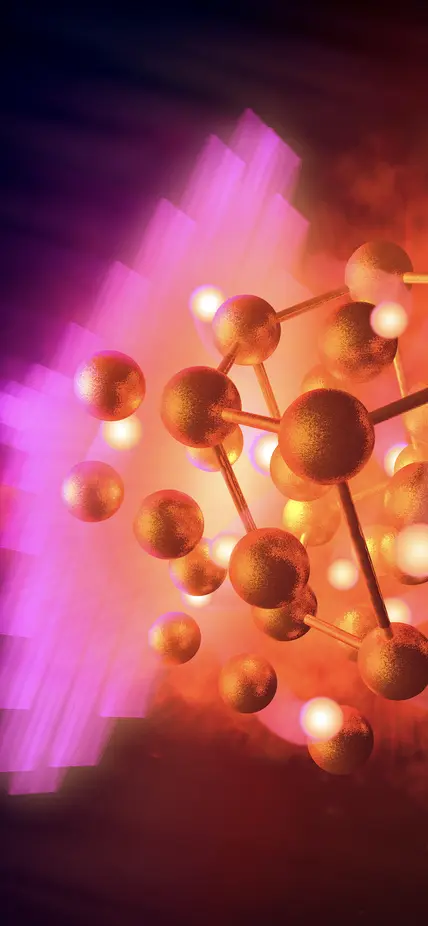Washington, DC—An international team of experts including Carnegie Science geophysicist Alexander Goncharov has for the first time synthesized a solid chemical compound composed of only gold and hydrogen. Their results—published in the German Chemical Society’s Angewandte Chemie—are surprising, because gold is not chemically reactive under ambient conditions.
The research group—led by the SLAC National Accelerator Laboratory—was able to produce gold hydride in a close-packed hexagonal lattice structure by bringing gold and hydrocarbons to over 400 thousand times atmospheric pressure and heating it to about 3,500 degrees Farenheit (1926 degrees Celsius) at the European XFEL (X-ray Free-Electron Laser) in Germany. They accomplished this feat by compressing the sample between two diamonds in a special piece of high-pressure research equipment and shooting it with high-energy x-ray pulses to heat it up.
“Gold is not a reactive metal and using it to form compounds with hydrogen is a relatively new idea,” Goncharov explained. “In fact, in our research instruments, we usually use gold as a kind of inert heat absorber to initiate chemical reactions, so it was a shock to realize that it can form a compound with hydrogen under extreme conditions.”
Carnegie Science is a longtime leader in advancing high-pressure techniques to synthesize novel materials and simulate the interiors of Earth and other planets.
Under extreme pressure and temperature conditions, materials undergo physical and chemical changes that enable novel structures and unconventional compounds to emerge. In the case of gold hydride, the research team found that the compound existed in what’s called a “superionic state,” in which hydrogen flows freely through the gold lattice.
When the compound is brought back to ambient pressure, the gold and hydrogen separate again.
“Hydride compounds formed under high pressure have potential practical applications in energy storage and superconductivity,” Goncharov concludes. “The synthesis of gold hydride advances our understanding of this important research area.”
Acknowledgments
This work was supported by US Department of Energy, the National Science Foundation, Carnegie Science, the Alfred Sloan Foundation under, the Deutsche Forschungsgemeinschaft, and European Research Council.
